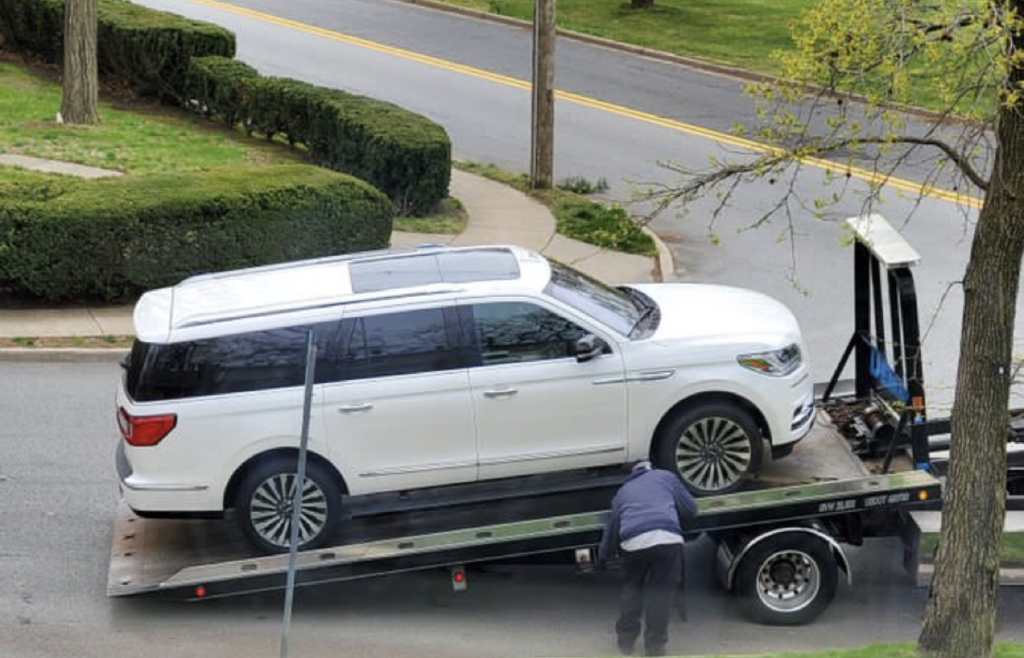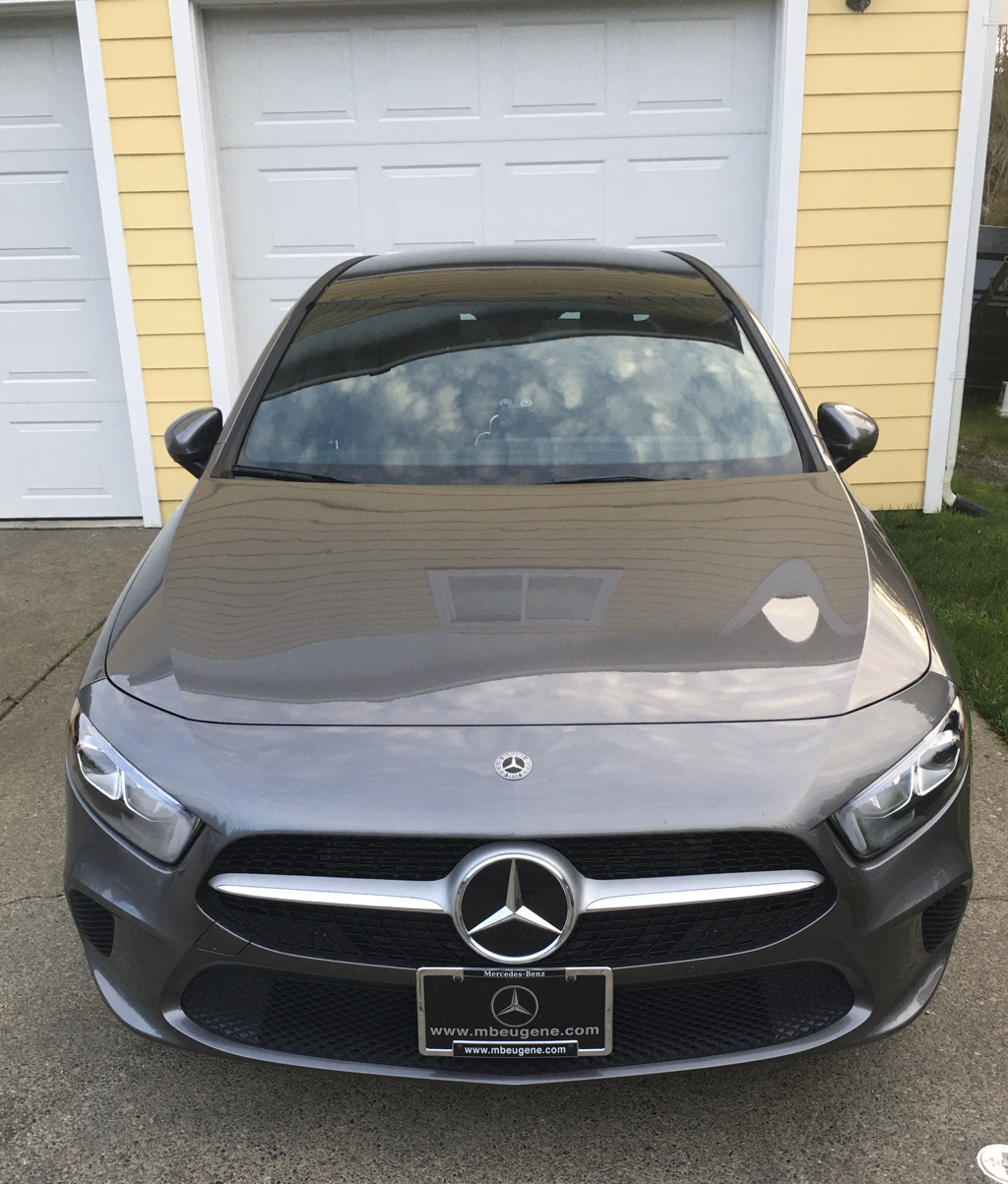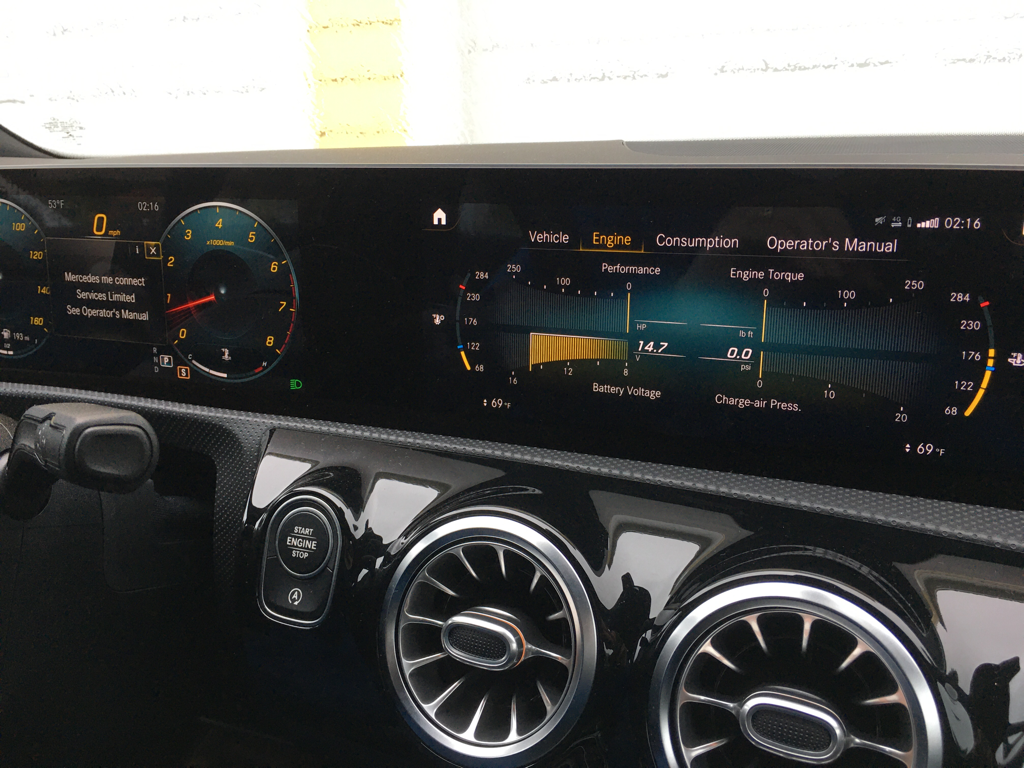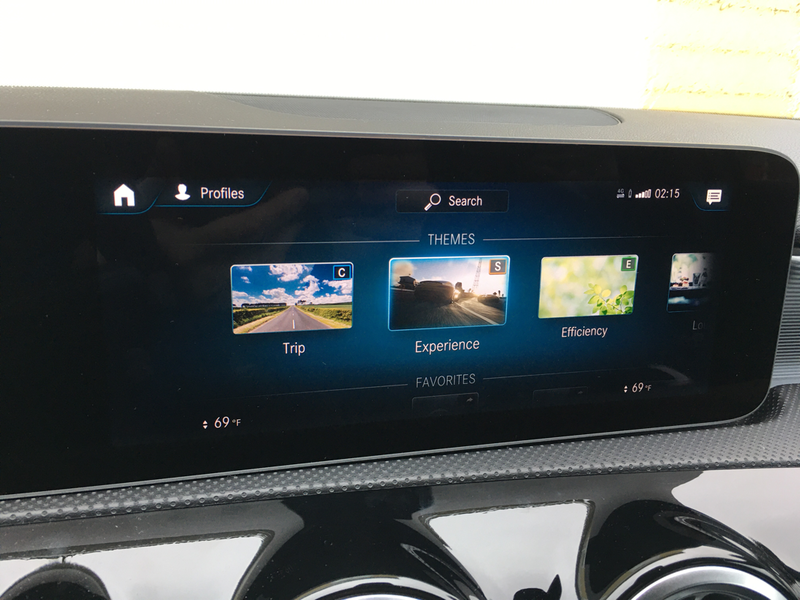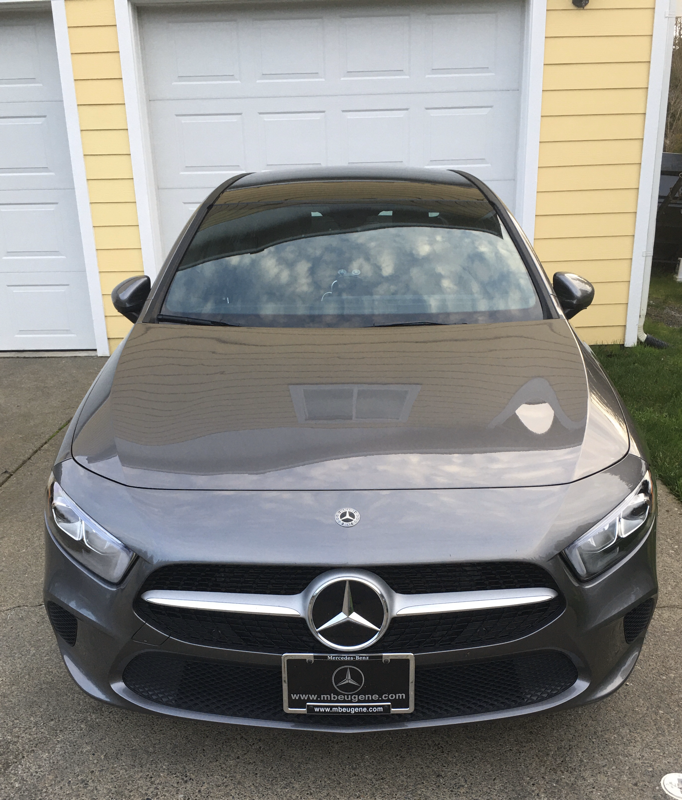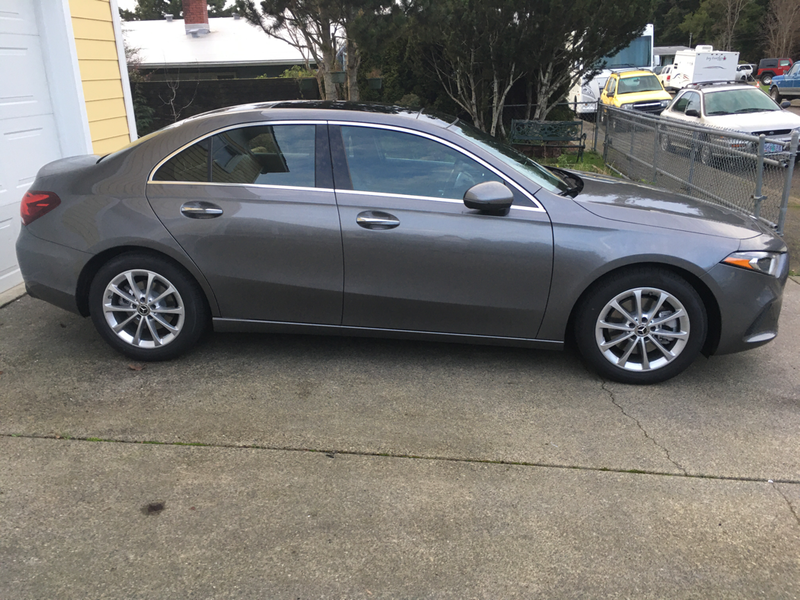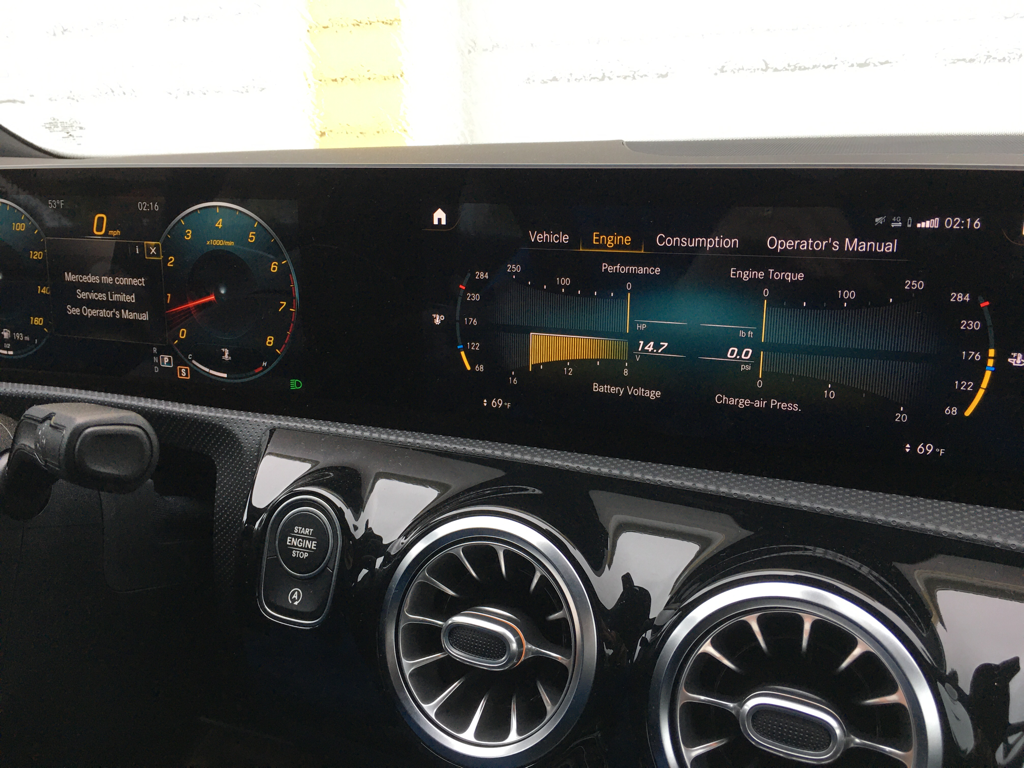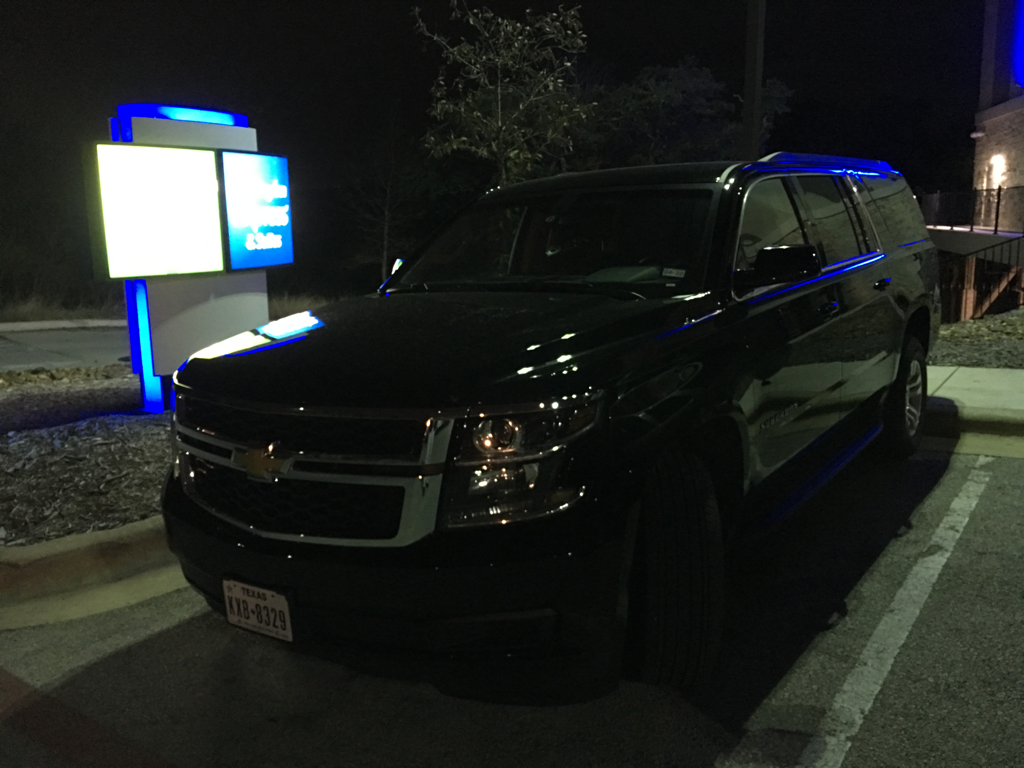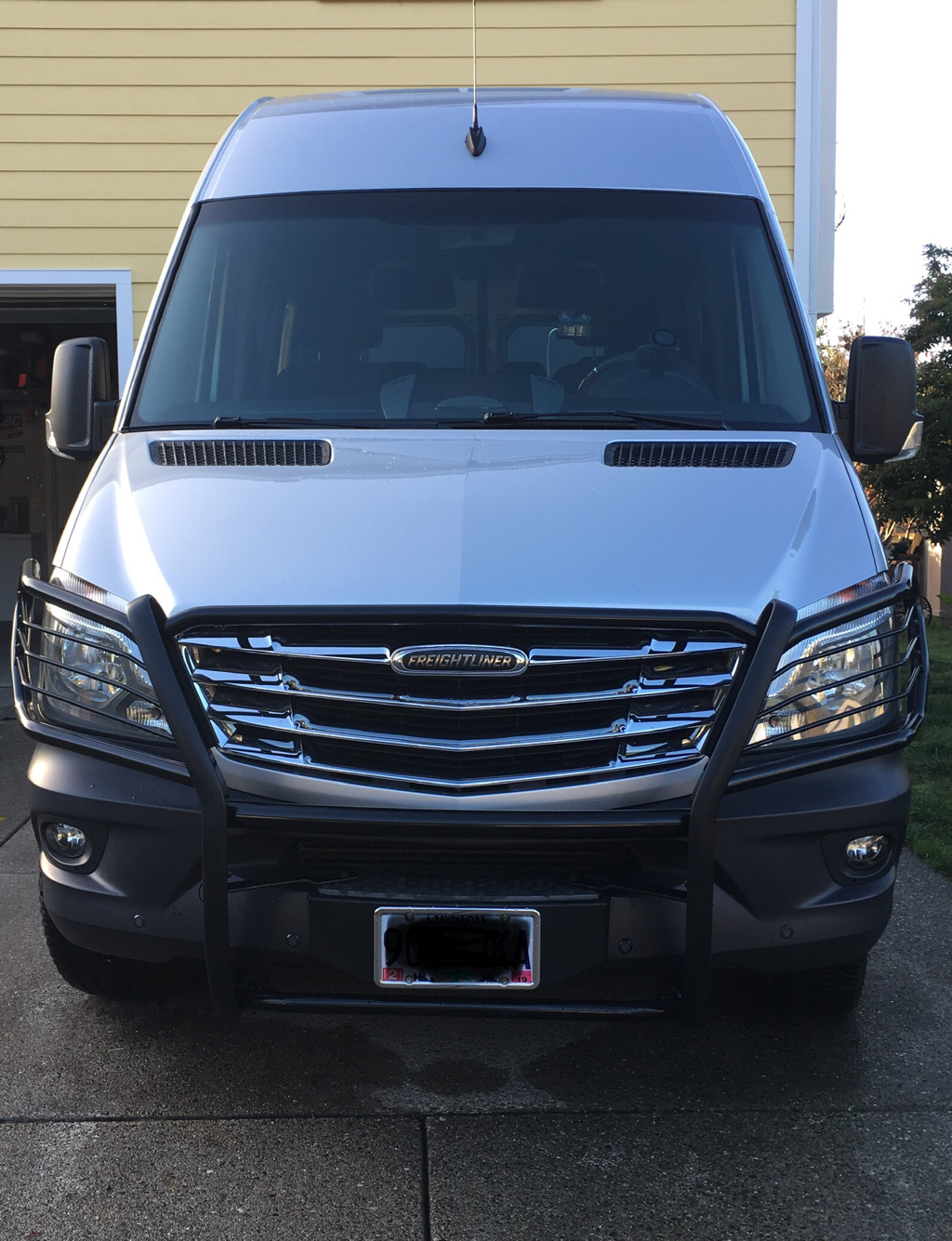| Perhaps you’re in the market for a new wheelchair van and you’re not sure what your options are or what the pros and cons to each decision is. If that is the case, hopefully you’ll find this article useful and interesting. There are basically two options in the wheelchair van world that people really need to consider. With that in mind I will quickly visit OPTION #3, because it is quite rare and rarely discussed. Option #3 is a product by Braun, which be installed on most vehicles. Depending on how much assistance the person in need requires and depending on if the person is a driver or passenger, either front seat can be designed to lift itself outside of the vehicle and lower to the side of the vehicle. This setup makes it easy for the person to either leave the seat and hobble away or to be transferred into a wheelchair. The reverse is true when they want to enter the vehicle, the seat lifts out of the cab and is lowered to near wheelchair level for transfer. Con: This option would require some additional side space for use. It also requires a transfer, if wheelchair is needed. OPTION #2 is quite common and this involves a lift or ramp installed on the back of a passenger van. This (rear-entry) setup is commonly seen on on medical or senior transport vans. The downside to the rear-entry arrangement is that it reduces the options and versatility to the back of your van. It obviously reduces your options for carrying cargo, if you have to move a wheelchair through the cargo area. The other downside is that you cannot pull a trailer or use a hitch type rack if you use this rear-entry option. The third downside is that street parking can be difficult, it just takes someone to park behind you to block the use of loading or unloading your wheelchair. The other downside to rear-entry is it may reduce your passenger capacity. Lastly, because rear-end collisions occur with more frequency, there may be more expense associated with an accident. The pros of rear-entry include not requiring a wheelchair handicap parking space, as you can unload in a normal width parking spot. This Pro is also another Con because, this option extends you out of normal parking space length and will leave you unloading into parking lot traffic. OPTION #1 is my personal favorite, it involves loading and unloading the wheelchair through a side lift or ramp. This option is what I decided to use on our family van. This option doesn’t affect the rear seats in our full-sized van, so we can haul more friends and family. It also allows us to carry lots of cargo in the back and also pull a trailer. I believe this option gives your vehicle the most versatility. Another plus, if you find yourself living in a rainy climate like I do; there is the possibility of adding an awning, to assist with the often time consuming process of using a lift in the rain. The main cons to this side option is that it does require a wider area for parking, so a wheelchair van parking spot is pretty much required unless you find a parking spot end, that is a parking spot with no spaces next to it. Also, depending on what side you exit, there can be issues with parking and unloading on one way streets. I suppose another con could occur if your lift or ramp impedes other passengers loading/unloading. Our Braun Under Vehicle Lift (UVL) tucks under the van, on the outside, which is not in the way of entry or exit when not being used. Some other lift types can be somewhat of a nuisance for passengers that don’t require a lift. I hope you enjoy whichever option you choose. |
|
1 Comment
Currently, I am in the middle of installing an emergency backup generator for my home. This is a practical item to have if you can afford it. This is a project that seems to cost more at every turn, thanks in large part to some bad information I received from my Natural Gas provider. I am now turning to propane as my remedy to that false information..
However, there are certain events that can easily knock out even my precious, planned emergency back-up. One major event that can happen anywhere on our planet and has occurred before, is known as an Electromagnetic Pulse, or more commonly known as EMP. A week ago I would have said that is a risk that has no real solution. Today I am happy to report on a new device that is actually made in the USA that is made for your home panel box, your generator and even your vehicles. In fact they make these devices for a variety of vehicles, including RV's. This sounds too good to be true and I know I was very skeptical at first. However, after going over the details, I must now admit that it looks like a prudent move. Since this blog revolves around vehicles I can say that this device for vehicles installs easily on your vehicle's battery. Because of this easy install, it also makes it easy to transfer the device should you sell or mangle the vehicle it is installed on. The device also installs pretty easily on your home's panel box, although an electrician is recommended. Should the unthinkable happen and our civilization is turned back to the dark ages via an EMP you will be able to power on, along with the US Military. This item also works to protect against lightning strikes on your electronics. Check out www.EMPShield.Com and use special code "ZapProtector" as the coupon code for a nice discount. This should be a must have item for all of our emergency vehicles, hospitals and any important powered structure. Congratulations, you finally earned enough money to buy the car that you've had your eye on for the last few years. You made sure to include all or most all of your favorite options on your checklist. Perhaps now you feel that you can finally breathe a sigh of relief and feel accomplished for the deal you negotiated. .
Unfortunately, months later Toyota (or fill in the blank with your favorite manufacture) informs you, through an email that many of these options you thought you bought are actually not yours anymore, they are being held hostage. They say that they will release some of these features or possibly all of them for your enjoyment, if you choose to continue to pay the ransom they require. You scratch your head and wonder, weren't these items listed on the new car sticker? Didn't I already pay for these options? Is this a scam? The answer to both of these questions is Yes. You did pay for them, or are paying for them as you pay your car or lease payments. They were listed as options and it really is a scam in my opinion. Isn't scam too harsh of a word for this? Nope, and I will tell you why. First, many people were never briefed about this when they purchased the vehicle, so consumers assumed that this standard of non-disappearing options hadn't changed. Secondly, how much do you think that remote start option or heated seats should cost? Should it be an item that you can never pay off? That's when you should know this a scam. So far, apparently a legal scam. Some state officials now have this very issue on their radar, we will see what happens. Today the dirty little secret of car manufacturers revolves around subscriptions. You probably assumed that the options that you purchased your vehicle with were for the most part included with the purchase price of the vehicle. That's the way it has always been, with the notable exception of satellite radio, which has always been handled as a third party vendor subscription. I first heard of BMW considering offering subscription options on vehicles, many that we may take for granted, like heated seats and heated steering wheel, or the auto on and off bright headlights that will cease to function without a continued payment or subscription. This apparently is going pretty mainstream now and has trickled down to the plebeian name plates like Toyota, GM, Ford, Stellantis and others. Some auto makers are worse at this fleecing you than others, so buyer beware. My wife purchased a new Toyota Highlander XLE around a year ago and because she drives it only for work, it has less than five thousand miles currently on the odometer. When purchasing the vehicle she mentioned that the dealership said nothing about disappearing options that would require a subscription to keep. Some of these options are safety features, some are convience, like the remote start.. A couple months back she learned that if she wanted to keep the options that she thought were already paid for, she'd have to shell out a few hundred dollars extra every year! Vehicle manufacturers are no doubt loving this new system that will bring in billions of extra dollars, long after vehicles are sold and paid for by their new suckers, ahem, I mean new customers. As for my wife, she is frugal and certainly not going to pay the ransom to Toyota for her previously owned options. Nor would she likely pay mine, if it were demanded. Many other consumers, most who will no doubt spend more time in their vehicles than she, will have to mull over the ransom request. In the meantime, I am enjoying my well appointed and paid off, 2015 vehicles even more, as they are the kind with options I can keep without the ransom. As reported by Fox News, the Ram Eco Diesel is scheduled to be discontinued next January, as the all-electric version is set to replace this model. The new model will not be able to fill the shoes of the Ram Eco Diesel, with regards to its amazing, 1000 mile range capability on its 33 gallon tank.
The manufacturer is now, apparently pivoting from a diesel highway cruiser, to an electric truck that is better designed for shorter city trips. The larger 2500 & 3500 models will continue on. The Ford F-150 Diesel was the first to bite the dust, disappearing in 2021 after only 3 years. GM recently redesigned its half-ton diesel pickup for the 2022 year, with a much admired inline 6 cylinder engine that delivers highway mileage said to well into the 30’s. It looks like this will soon be the only new option for pickup truck buyers who want the least range anxiety, at least without adding a tank. Some have recently no doubt considered trading their diesel powered vehicle in for a gasoline powered car or truck, due to the growing gap in fuel prices.
Diesel prices have increased sharply as refiners have focused on producing gasoline, this has created supply issues in some spots of the country, as diesel is the dominant fuel for business. According to a recent report on the Fox Business Channel it appears that refiners are about to switch things up and will soon be switching their focus to producing more diesel fuel. This, as you may guess should bring down diesel prices across the country, while simultaneously causing gasoline prices to spike. Unfortunately for gasoline consumers, this looks to only add to the already higher priced, summer travel season. So, if you're trying to plan ahead, keep this in mind. Traditionally, the used car market has existed as a a cheaper alternative to a new vehicle. Today however, It's now very common to discover used vehicles, a few years old that are in fact demanding a higher price than a brand new one! I've seen this scenario play out on car lots, new and used, across the country.
Car dealers will tell you that all car prices are up, thanks to inflation. Car dealers used to have a reputation (well deserved) for being absolute sharks, you wouldn't believe a word they said about a car's value. If you didn't do your homework buying a car, you would pay through the nose. That has never been more true than now. Unfortunately, many consumers will take their word with no question and gladly overpay. The sales people working the floor will tell you that inflation has driven up prices on all cars, new and used. While it is true that used car prices, which are up about 45% from a year ago, that isn't the case for new cars. In fact for one example, the 2022 VW Tiguan SEL-R is the top trim level for VW's most popular SUV. In 2021 the top trim level on the Tiguan was called the "SEL Premium R-Line" level, which had an MSRP around $3,000 more than the 2022 SEL-R, which actually has more features. The decrease in the sales price likely reflects the savings to the manufacture from consolidating. Simplifying and actually making fewer trim lines saves the company money and makes them more competitive. Despite this knowledge, it won't stop many sales people from trying to gouge you, with padding the MSRP. The typical line is that "market place conditions" require them to add $2000 or $3000 to the MSRP. This simply is not true. In my recent research and purchase I've confirmed that while many dealers will try to charge you over MSRP, there are still plenty that do not. In fact, many car manufacturers are punishing their dealers that do this. Getting a fair deal could require a purchase across state lines, from Oregon to Washington for example, with the case of the Volkswagen, but I've found dealers that will drive the car half way (3 hours) or even further, for no additional money. This is a similar situation I've seen before when buying my past new VW TDi vehicles or when I bought my Sprinter van, in fact easier. I should also mention, that all the California new car dealers I've spoken with will offer to deliver your car across the California boarder so they won't be required to collect the steep California sales tax. Something to consider if you border California. From my residence on the Oregon coast I could drive to the largest dealership in the area, located in the big city, inland and pay thousands over MSRP for a new Mazda, for a car they didn't have. I could also drive to a small town to the south of me and pay MSRP. MSRP isn't leaving the dealer poor, they are still making bank. When the chip market catches up with new car demand we will see the gullible consumers that overpaid, will again get fleeced when it comes to selling their car. So, the lesson is don't pay too much in the beginning and sell your car years later without the extra loss in value or time on the market. Everyone knows snob appeal when they see it. It usually boils down to a product that one buys for purposes of social climbing or attention. These products can be anything, from nice purses, designer, name brand jackets or sunglasses, or various other accessories, or often prestige name branded cars.
For the car market we saw that the Japanese first comprehended how to make the most of this segment in the 1990's, when Toyota gave birth to Lexus and Nissan gave birth to Infiniti and Honda with their Acura division and so on. Today Hyundai is developing its prestige make, the Genesis brand. The plebeian name plates understand the luxury name game, but do the luxury brand names understand the plebeian name benefits? You may be laughing and saying who wants to buy a nice car designed as a humble, under the radar vehicle? This is something that Volkswagen understood, unfortunately too briefly. VW has made many high class luxury vehicles that could have easily carried the Audi name, such as the Touareg, the Phaeton and the Passat W-8. VW has discontinued all of these cars for the US market. But, if you look for a used VW Touareg, especially the 2016-2017 model years, in especially the TDi trim you'll find that they have serious used car demand, their prices reflect that. I was recently reminded how the 'under the radar' market is a niche that shouldn't be forgotten, unfortunately we see that it is. The most recent example of this was for Mercedes to do away with the blue collar, Freightliner badged Sprinter line. It was discontinued the end of last month. Currently my wife and I are looking to buy a new vehicle, I found one that looks promising for our needs. There is one big problem, the car carries a prestige nameplate and is not available in a plebeian name plate version. My wife, like my late grandmothers could afford a prestige name plated car, but wouldn't be caught dead owning one. My wife agrees that the Mercedes SUV is no more expensive than the plebeian name plates, but it carries the Mercedes name that attracts more attention than she feels comfortable associating herself with. She has felt this way for the 20+ years we've been married and even more so now because her job also discourages flashy cars. She has a point, after all when you take a prestige name plated car in, say to be detailed, the price is higher, the service may cost more on the perception you have more to spend, tips are suddenly expected and car thieves drool at the thoughts of stealing parts off of or your entire car. In short everyone sees you as a piggy bank, flush with cash to be exploited. So, what to do? It's a shame that Mercedes make a great vehicle at a competitive price but is disqualified only because of its highfalutin name. At this point they don't offer it in any other, more "socially acceptable" brand name; such as our Freightliner branded Mercedes Sprinter was, when purchased back in 2017. It may sound silly, but perhaps the Freightliner name or another, less pompous name should be used to offer a mirrored line-up of Mercedes SUVs, for those who don't appreciate the flash and attention of the big star, but still want the car. People could still service their cars at the MB dealer, as I do with my Freightliner. I know that the car magazines would mock this idea at, at first, as they did with VW. I believe it would be the preferred option for many, including those involved in charities, foundations, government and religious organizations and those who just seek "low ego emissions" vehicles. Unfortunately it appears that Daimler doesn't appreciate or see this as an avenue worth pursuing. Attention aftermarket vendors, if your paying attention perhaps it wouldn't be a bad idea to offer a Freightliner grill for the MB SUV line-up? I know of at least one interested buyer. I think that would be pretty cool. My family owns a 2015 Volkswagen Golf Sportswagen SE TDi that we purchased brand new in the summer of 2017. The car has been a terrific car, one that we plan on spending many more miles and years enjoying.
Unfortunately, my wife recently brought an issue to my attention that makes me question the value and appeal of having a sunroof, especially the large panoramic variety. The issue you ask? She drove the car to work on one of our many rainy days here on the Oregon coast and parked it, facing down hill. When she hopped into the car to drive home for lunch she noticed that the front seats were quite wet, as well as the inside ceiling. As it turned out, the rear wheel well, where the spare tire and subwoofer is held, was also holding a small pool of water. We very seldom ever use our sunroof, and rarely even bother to look up, through it. How could so much water enter so suddenly, when it was all closed up tight? A call to my VW dealership was quite enlightening. I explained the issue and that it is the customer's responsibility to do periodic cleaning and inspection of the sunroof, as it supposedly says in the owner's manual. I was shocked to hear that, but then reminded him that all of my service for the car has been done at the their dealership, including a service that was just completed one week prior to this leak. During that service they even asked me if I wanted to have the service bulletin for the drainage of the moonroof taken care of. I said sure and then they replied that it was their mistake, it was already done last year. Had they forgotten to inspect the sunroof while they had it in their possession? Regarding the servicing, I replied that I would assume that if something is important (as this is) they would include it with their other services. I was surprised to hear that it is included, for my car model, only starting at the 40,000 mile service! That sounds ridiculous, but is actually true, as I confirmed in my VW manual. It is sooner and more often for the Touareg model, but not so for the 2015 Golf Sportswagen. i am not alone with this cold (wet) discovery, it turns out that with an internet search of "Volkswagen sunroof leak", results yield VW Class Action Lawsuits up and down the screen. I was disheartened with this news. We love our car, what to do now? We live in a rainforest, we can't have a car that isn't weatherproof, let alone a car that can't handle rain! I was curious to know if this was a VW issue or if other makes also soaked their customers on this issue. So I called a friend who is a service adviser at a Mercedes dealership. I asked if Mercedes cars and trucks have issues with sunroofs leaking"? He said "they all do". All makes have the same issue, as the issue mostly comes down to the drainage and that needs to stay clean or water will overflow into the passenger compartment. As I understand this, there are typically two drains at the front of the sunroof and two drains at the rear of the sunroof. These drain hoses are about the size of a drinking straw and thanks to spider webs, pollen, tree needles, leaves or you name it, can be easily plugged, even if you never use your sunroof. The drain hose can also disconnect altogether, leaving water draining where you don't want it to. The Bottom Line: My friend at the Mercedes dealership said that is why they (MB Service techs) check the sunroof drains at each service. Perhaps that is one reason why you don't see the class action lawsuits and disgruntled customers that you see with VW. VW doesn't service this important issue nearly as often as they should and customers don't even know they need to, until their vehicle is possibly ruined with water damage. It is getting more and more difficult to avoid a sunroof in a car, as most midline and upper trim lines have them as standard. My thoughts in conclusion: I have learned that car manufactures that sell vehicles with these large sunroofs should service them often and they should actively inform all owners of the importance of this maintenance, because people become very angry when learning this potentially costly and avoidable lesson on their own. Vehicles that are not properly and quickly dried can develop interior water stains and mold growth can become a health concern. Water damage often results in cars being "totaled" by insurance claims and all of our rates increase to pay for it. With my car at least, I don't see how anyone that is not a professional mechanic could be expected to clean out the drains on their panoramic sunroof, especially the rear drains, where it appears the rear tires may need to be removed for access. Which brings me back to my first point. Far too many cars and trucks and almost all prestige brands have sunroofs/moonroofs as standard equipment. Can we all just let go of this obsession to see the sky through our vehicle's roof? Likely not. The point of the story; When you bring your car in for regular service have them check and clear the drains for your sunroof. if you don't have a sunroof, good for you. When Sprinter vans debuted in the USA back in 2001, they did so under the Freightliner brand. From 2003 to 2009 Dodge branded Sprinters were also available, as a product of the Daimler-Chrysler relationship. The Dodge, Daimler-Chrysler relationship ended around 2009 and Mercedes branded Sprinters took their place, at select Mercedes-Benz dealerships. The one thing that has remained consistent throughout the last 20 years of Sprinters existence in the USA is that Freightliner badged Sprinters have always been available, at select Freightliner dealers.
While some buyers are naturally attracted to the Mercedes branded Sprinters, many businesses, charitable organizations and government institutions prefer to avoid the negative attention that a prestige brand may draw, and instead chose a Dodge or Freightliner branded van. It was also common for many groups or institutions that bought a Mercedes branded Sprinter, and didn't want the attention of a Mercedes to change out the grill and emblems to a more blue collar Dodge or Freightliner brand. These vans, regardless of the name on the grill have always been made by Mercedes-Benz. While Freightliner does remain a part of Daimler, there was apparently a decision that will end Freightliner's very long role with the Sprinter offering, effective December 29, 2021. I haven't heard what happens to the existing Freightliner dealer inventory, although I would assume they will be collected by Mercedes and sold through their dealerships. What does this all mean? Well this means that the Freightliner dealers that currently sell and service Sprinters will soon no longer be able to do so. Freightliner Sprinters that need factory service will need to have that work done at select Mercedes Benz dealerships, ones that currently sell Sprinters. In truth, there are many more Mercedes dealerships across the country than Freightliner dealers that offer Sprinter service and the price of the service did not favor Freightliner, as one may assume. With all of that in mind, I do prefer a Freightliner branded Sprinter over the MB and I was planning to buy another, when our Freightliner finally needs replaced. It's kind of funny, because years ago we were choosing between two Sprinters, one was a beautiful blue-grey Mercedes and the other was our sleek, silver Freightliner. My wife was initially the reason for choosing the Freightliner, as she didn't want our neighbors to think that we were being ostentatious. Over time I really learned to love the "King of the Road" name plate and I figured it was actually more fitting as our working/family rig. We have since had many overnight stays in Portland hotels and many other sketchy cities here in the USA and Canada where I was relieved that the big 3 pointed star wasn't posted on our grill. I don't appreciate the Freightliner label being removed from the picture and I don't believe this is a particularly good time, as Mercedes Sprinter service centers are currently over-packed. Unfortunately, the Mercedes-Benz name association with Sprinter has taken a hit since they no longer treat their Sprinter customers with the same courtesy as their other Mercedes customers, many with cars that cost less than new Sprinters. None-the-less, demand for these vans seems to always be at a feverish pace, with many selling long before they hit the dealer lot. This is great for the sales department, but again, hard on service departments and those needing or expecting prompt service. This prompt service was typically available much sooner at the Freightliner dealership, which now, no longer exists as an option. I for one, will miss the twenty year Freightliner relationship. After all it's one that has lasted as long as the Sprinter has existed in the USA and I feel bad for the Freightliner dealers that have invested much in making their dealerships successful. I know our Portland, Oregon dealership was really looking it's best before the plug was pulled. My family has a small (incidental) side business that transports overseas shipping boxes, with our Freightliner Sprinter passenger van. We, on occasion drive up a load of boxes on the five hour trip, to the Portland warehouse. These boxes are destined to rendezvous with a shipping container for the long trip to the Philippines.
Sprinter vans have deep roots in delivery van ancestry, after all that's what they were originally designed for. It should come as no surprise that they do this job, among others, very well. One attribute of this admirable trait is that the heavy cargo being carried is not so obvious, not by the typical rear end sagging that many other vehicles give as a tell. Indeed, I have loaded my rig up to the gills on many occasions and was not pointed skyward as I drove down the road. With this in mind, I was wowed and delighted to find that there is actually a relatively inexpensive device that easily uses your smart phone to weigh your vehicle! It plugs into your vehicle's OBD II Port and works with your mobile smart phone to tell you what your vehicle weighs. Not only that, but it can also even (supposedly) even tell you the weight of the trailer you have hooked onto your vehicle, among many other options. I say supposedly, because I haven't tried this part yet. The ratings from other users do look promising however. I received mine in the mail yesterday and decided to try it out today. So I plugged it in while at an old Kmart parking lot and quickly calibrated the unit to my vehicle. it wants level ground and it's best to have space to drive a straight line up to 15 mph before stopping. That was about it. It came back with a weight of my Sprinter around 6500 pounds, with me outside. I couldn't believe that number. I was really thinking that this device was off by a thousand pounds, so I was planning on sending it back, but I decided to drive the 10 or so miles out to the nearest free weigh scale just to confirm. I am very glad that I did, sure enough the public weigh scale confirmed 6700 pounds, with me in it. I'm looking forward to putting this to work on our future travels, but as for now I am quite pleased. The only real downside to this wonderful device is that it uses bluetooth and doesn't like to share other bluetooth uses with the car. They apparently designed that purposefully, for better accuracy. No matter, after I have the weight numbers I am looking for, I can easily switch on the bluetooth radio. The device can just remain quietly plugged into the OBD II Port for whenever I may need it again. The retail value is $135, however many retailers have it as low as $99, which is what I paid. Its worth a look! |
AuthorNathan has researched vehicles and vehicle pricing for over 30 years and has visited and talked with hundreds of dealerships nationwide. He is a former Oregon vehicle broker, who specialized in commercial vehicles. Nathan also operated an independent insurance business for twelve years, until exiting in 2024 to serve as a full-time caregiver for his youngest son. Categories
All
|


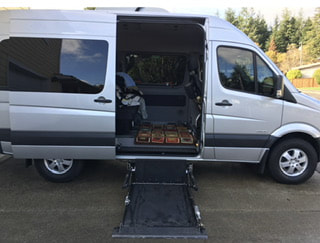

 RSS Feed
RSS Feed

